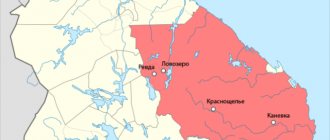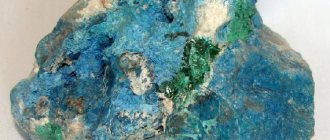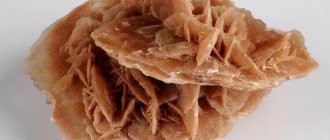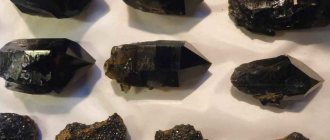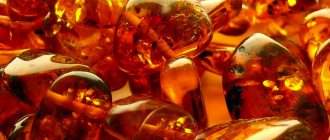The presence of sufficient mineral reserves is a guarantee of successful development of industry and economy. The prosperity of the region depends on deposits of mineral salts, oil, natural gas, diamonds, metals and coal. The well-being of the Perm region is directly related to the pace of mining. There are more than 500 names in the region.
Dolomites, gypsum, lime, marble, anhydrite, marl, and chrome ores are represented. As well as mineral pigments, sand, expanded clay, clay, strontium. Minerals of the Perm region, which are of paramount importance for the region:
- salt;
- oil.
In addition to them, the lands are abundant in a number of other sought-after minerals, chemical elements and metals:
- iron ore;
- coal;
- peat;
- diamonds;
- gold;
- volkonskoite;
- rubidium;
- bromine;
- iodine:
- strontium;
- platinum;
- anhydrite;
- limestones;
- gypsum;
- uvarovite.
The extraction of black gold in the Volga region began relatively recently, about a hundred years ago. The drilling of the first wells took place under the leadership of the scientist and geologist Pavel Ivanovich Preobrazhensky. The work was carried out several kilometers from the border of the rural settlement of Verkhnechusovskie Gorodki. In 1929, the first oil was obtained from the well.
A little later, minerals in the Perm region were discovered in the area of the settlements of Kueda, Dobryanka, Krasnokamsk and Polazny. The largest oil deposits are located near Chernushki and Os. Some deposits are still subject to development.
Black gold
The local oil has a rich charcoal color. It is viscous and thick. It lies at great depths. Therefore, the extraction of such a valuable mineral in the Perm region is associated with colossal financial investments. Geologists believe that black gold deposits appeared in these places during the Devonian period.
Advantages of Volga oil:
- excellent chemical properties;
- high quality;
- its processed products can be used in the aviation industry.
To date, exploration work has been completed at 200 fields in the region. Oil and gas production is underway.
Ershovsky mine in Kusye-Alexandrovsky
On the high left bank of the Koiva, above the village of Kusye-Alexandrovsky, rise the ruins of a large building made of rubble stone, a bit like the ruins of a medieval castle. Nowadays, rarely anyone comes there, except tourists. And few of them realize that diamonds were mined in these places in the 40-50s of the last century.
On July 8, 1829, a 14-year-old boy from the village of Kalino, Pavel Popov, found the first diamond in Russia. This was preceded by a conversation between the famous naturalist Alexander von Humboldt and the owner of the Biserskaya dacha (which included the Holy Cross crafts) Count Adolphe Polier, where the scientist pointed out the similarity of the minerals of the Ural placers with the Brazilian ones and promised not to leave Russia until he found a diamond there. After this, Count Polier gave the order to begin re-flushing the dumps. Then another discovery followed, and another. Pavel Popov received his freedom for this, and the log in which the diamond was found has since been called Adolfov. One of the first diamonds was presented as a gift to A. von Humboldt, and the other to the queen.
Before the revolution, about 300 crystals (usually jewelry quality) were mined from the Ural placers, mainly in the area of the Krestovozdvizhensky crafts (now the village of Promysla). As a rule, diamonds were mined accidentally during the development of gold-bearing placers, and targeted searches for diamond-bearing placers usually ended in failure.
Industrialization that began in the 1930s required large quantities of diamonds for technical purposes. In 1933, exploration work began on the western slope of the Middle Urals, and already in 1938-39 diamond placers were discovered along the Koiva, Vizhaya rivers and along the middle reaches of the Chusovaya River.
The logical result was the creation of the Ural Diamond Expedition in 1940, and pilot industrial development began the following year. The Teplogorsk mine administration is being created under the Uralzoloto trust. Industrial development began in 1943, and in 1946, the Uralalmaz mine was formed on the basis of the Teplogorsk mine.
And in the famous year 1937, prospector Afanasy Yakovlevich Kolykhmatov (who later worked in the Ural Diamond Expedition) and his son Konstantin, while mining for gold, found 2 diamond crystals in Ershovsky Log, which is on the outskirts of the ancient village of Kusye-Alexandrovsky. In 1940, this village became the base of the Ural Diamond Expedition, and 6 years later the base of the Uralalamaz mine. Thus, a small Ural village for some time became the diamond “capital” of the Soviet Union. In those years, during geological exploration work in construction, the labor of prisoners from the Kusinlag camps was actively used.
In 1948, a stone finishing factory building was built at the Bolshoy Ershovsky mine. The rock was brought to the factory in trucks from the quarry and unloaded along an overpass into a warming bunker - a large room with an inclined floor and a mesh below, where the rock was washed with water to remove clay and large stones. Then the rock enters the butara (a rotating perforated barrel), where the rock mass is finally rid of clay impurities. After this, the rock went to the classifier and screen (a set of sieves with meshes 16-8.8-4.4-2.2-0.5 mm). From each sieve, the material was separately fed to jigging machines (OBM-5), where the heavy fraction was separated using vibration (with a density of more than 2.9 kg/cub.m., diamonds are contained in this fraction). The light fraction was removed manually. The resulting concentrate was dried in ovens. After repeated screening, the rock was fed through a pipeline to the X-ray machine, where the radiologist manually turned the conveyor belt in the dark. If a luminous point appeared, then it was a diamond, it was selected with tongs, and at the end of the working day it was taken to the cashier.
In 1954, the Uralalamaz mine completely switched to the dredge mining method. Perhaps the factory was transferred to finishing concentrates from drags.
And in the early 1960s, in connection with the discovery of the Yakut kimberlites and the mining of placers with good grades, Uralamaz moved to the richer Vishera placers, where diamonds were mined until recently. Diamond mining in the Gornozavodsky district has ceased, although prospects for the discovery of industrial placers remain today.
This is what the factory looked like at that time
Another old photo of the factory
Modernity:
The factory dump is now used to fill roads
The article uses photographs from the collections of the Gornozavodsk Museum of Local Lore, the library of the village. Kussier-Alexandrovsky, modern photos by the author.
A lot of material was given to me by the materials of the sixth Kireyevsky local history readings (Gornozavodsk, 2005) and the book “The Facets of the Vishera Diamond” (Perm, 2006).
Gratitude for valuable advice and recommendations to Timur Valeryanovich Kharitonov, leading geologist of Permgeolnerud OJSC.
© Vladislav Timofeev,
head of the Uraloved project in the Perm region
UraloVed.ru
See also:
Kusinsky “waterfall” - an echo of diamond mining
Diamonds of the Perm region
Kussier-Alexandrovsky Iron Foundry in old photographs
Ershovsky mine (Perm region) on the map:
Support Uraloved
Share with your friends!
Mineral salts
Residents of the region began to receive their first salt hundreds of years ago. Scientists and historians are still guessing about the exact date of the beginning of mining in the Perm region. The name of the person who came up with the idea of boiling the salt also remains unknown. Only written documents mention certain merchants Kalinnikovs, who specialized in boiling salt.
Their craft was adopted by the Stroganovs, who managed to oust products from Balashikha and Vychegda from the Russian salt market. The region produces not only table salt, but also potassium salt. According to information from a textbook on the environment for 4th grade, minerals in the Perm region are concentrated in the Verkhnekamsk and Krasnovishersky districts. The lands near the settlements of Bereznyaki and Solikamsk are abundant in potassium salts.
Local chemical industry enterprises specialize in their processing and production of mineral fertilizers. They produce industrial and edible salt. They supply raw materials for the titanium-magnesium plant.
Diamonds were mined here. Photo report from the north of the Kama region
During our second trip to the north of the Kama region, our plans were to inspect the dredges of Uralalmaz JSC on the road to Volynka. We thought of looking from afar, without fanaticism, and then either back, or at the Kolchimsky stone, which was also not particularly planned in the mandatory program. However, things turned out differently. Suddenly we decided to climb the Kolchimsky Stone in the evening and drove towards Volynka along a grader that was being repaired.
| Diamond mining dredge IZTM-250DU manager. No. 141 JSC "Uralalmaz". |
As it turned out, fate itself sent us here. We became the owners of unique photographs of diamond mining dredge No. 141 of Uralalmaz CJSC. We are probably the last to examine and photograph this dredge in detail. In November of this year, the entire dredge fleet of Uralalmaz CJSC was cut into metal. But first things first. First, a little history.
The Uralalmaz company is part of the Ruiz group of companies, the holding company of diamantaire Levi Leviev, operating in the diamond and jewelry industry in the CIS. Ruiz Group of Companies, in turn, is part of the international holding Leviev Group of Companies (LGC), one of the world's largest players in the diamond industry. In addition to Uralalmaz, the Ruiz holding includes the Ruiz Diamonds cutting enterprise and the Moscow Jewelry Factory.
The group's activities in Russia began in 1990 with the creation of the Ruiz Diamonds joint venture on a parity basis between LGC and Glavalmazzoloto. With the collapse of the USSR and the liquidation of Glavalmazzoloto, full control over the enterprise passed to LGC.
The company's revenue in 2011 amounted to 791.7 million rubles. Uralalmaz is the largest diamond mining enterprise in the Ural region, founded in 1946. The diamonds mined by the company are unique and among the best in the world in terms of their quality characteristics. Uralalmaz's share was about 1% of the volume of diamonds mined in Russia.
| See also photo reports from the village of Sarany, where the mineral uvarovite, so prized by collectors, is carried out of the mine in bags, and from the village of Promysla, near which the first diamond in Russia was found. |
The company carried out mining mainly in alluvial deposits. Diamonds mined in this way are easier to process and have a significantly higher yield of finished products (diamonds) compared to native diamonds (kimberlites).
The first half-carat diamond was found by a fourteen-year-old boy at the gold placer of the Krestovozdvizhensky mine in 1829. But, despite the subsequent numerous finds of small diamonds, systematic searches for placers began only in 1937, and in 1941 the Uralzoloto trust organized the Teplogorsk Diamond Mining Directorate, which in 1946 was transformed into the Ural Diamond Mining Directorate - Uralalmaz. Thus, the Uralalmaz mine became the first diamond mining enterprise in Russia. With an increase in production volumes, the mine was relocated to the Krasnovishersky district, where it has worked until now.
Uralalmaz's annual production was over 60 thousand carats, with reserves of about 1 million carats. CJSC Uralalmaz, after the closure of the Federal Penitentiary Service and the Vishera Pulp and Paper Plant, remained the only large city-forming enterprise in Krasnovishersk.
The company had grandiose plans for geological exploration, commissioning new fields and improving production technology, but they were not destined to come true.
Last fall, the company stopped diamond mining. Officially, due to the fact that the main deposit, Volynskoye, was actually depleted. And at the end of December, the CJSC was sold to Andrei Zadorozhny , who on February 18, 2014 decided to liquidate the CJSC.
On May 27, 2014, the Moscow Arbitration Court declared Uralalmaz CJSC bankrupt and opened bankruptcy proceedings against the liquidated debtor for a period of six months. According to the case materials, during the liquidation it was established that it was impossible to satisfy the creditors' claims due to the insufficient value of the debtor's property. The amount of creditors' claims for monetary obligations amounts to over 900 million rubles. The debtor's property is estimated at 333 million rubles. In addition, there are accounts receivable in the amount of 23 million rubles.
This is the context that can be found in open sources. However, the information about the depletion of the mines is nothing more than a myth, and there is a suspicion that in the summer of 2014, work on diamond mining was carried out, albeit in a quarry way. And the dredges, the dredges were already doomed then. They were supposed to be cut for scrap in the fall, which is what happened, to satisfy the demands of creditors.
| This is what the dredge looked like on November 2, 2014, during the cutting process. |
What is happening now with the dredges of Uralalmaz cannot be called anything other than vandalism. Cyclopean mechanisms that are still suitable for use for their intended purpose (dredges made in the 1930s are used in the gold mines of the Urals) are mercilessly destroyed.
The new masters of life don’t care about economic efficiency as much as they care about our history. Against this background, talk about creating a diamond mining museum in Krasnovishersk does not even look like childish babble and pharisaism, but the ravings of a madman. After all, a truly attractive and interesting diamond mining museum, which nonresident tourists would come to see in godforsaken Krasnovishersk, can only be found in a dredge.
Viktor Pankov understood this in 2012 , discussing this topic with museum specialists and the then owner of Uralalmaz. But there was no ready-made project; there was talk of moving the dredge to the shore near the Palace of Culture. Technically it wouldn't be difficult. And then the management of the diamond miners changed, and Pankov was no longer the head of the district. A new broom sweeps in a new way. I think he will sweep everything clean, not even leaving a rusty dredge bucket for a banal monument at the entrance to the city.
Krasnovishersk lost its last chance to become a museum pearl of the industrial Urals. The penultimate ones were the VtsBZ workshops, with equipment from the 30s, which also went to Vtorchermet. But let’s return to our history and see what triumph of engineering, embodied in metal, we have lost.
We didn’t have the slightest idea where to look for the dredges or how to get onto them, and so we looked intently out the car windows along the way. Crossing the Bolshoy Kolchim River over the bridge, we almost missed what we were looking for. From a distance, the dredge could be mistaken for a multi-story building, although where would it come from in the Ural taiga? We turn around and drive off the grader onto the technological road of the Bolshe-Kolchimskoye field.
We take the first shots furtively from the car window. Who knows how the situation will turn out, because the mine is a sensitive enterprise. We decide to move on. Having approached the dredge, we split up. The guys went aside to the dumps to take pictures of general views, and I, as usual, started building relationships with the aborigines of this harsh planet Kin-Dza-Dza.
| Dredge (from the English drag), a floating mining and processing complex for the development of water-logged mineral deposits and the extraction of valuable components (gold, platinum, tin, diamonds, etc.). Dredges are used to develop mainly alluvial deposits. Dredges are divided into two classes: continental (for the development of continental placers), which, as a rule, are mounted on a flat-bottomed pontoon (vessel), ensuring their normal buoyancy and operation in a closed reservoir, and sea dredges, intended for the development of placer and sedimentary deposits located in the coastal zone and in the deep-water part of large lakes, seas and oceans. The dredge design diagram was taken from the website. |
Our heroine is the IZTM-250DU diamond mining dredge, manager. No. 141 rests peacefully in the face at the site of its last resting place. The dredge is my age, manufactured in 1968 at the Irkutsk Heavy Engineering Plant.
The dredge scoop capacity is 250 liters. Underwater digging depth up to 12 meters. Average productivity is 320 cubic meters of rock per hour. Electric motor power is 1082 kW. The length of the dredge is 92 meters, width - 26 m, height 25.7 m. Structural weight - 1373 tons. Displacement in working order - 1460 tons.
Dredge No. 141 differs from its brothers in the presence of a crane on the front mast. This is the only dredge with such a crane at Uralalmaz fields. It is noteworthy that the terminology used on the dredge is that of a ship, and the masts are called front and rear.
With the help of a dredge, the Bolshe-Kolchimskoye diamond deposit, which is an alluvial placer, was developed. The placer was formed in the Neogene, during the erosion of alluvial conglomerates and sandstones of the Takatin formation of the Lower Devonian. The deposits of the Vishera region are confined to the Kolchima uplift and are characterized by a relatively high diamond content for cost-effective development and a large average mass of stone. The quality of placer diamonds is quite high—jewelry varieties account for up to 52% of the total number of crystals. The average diamond content is 8.2 mg per cubic meter. Compared to the gold content in gold mines, this is simply insignificant, but these are the features of diamond mining.
The genesis of Ural diamonds is still not fully understood. As you know, we do not have kimberlite pipes, but we do have diamonds. There are two versions of their origin. According to the first, diamonds were brought from afar, from the Russian Platform. According to the second version, the primary sources of diamonds are somewhere nearby. The discovery of kimberlites in the Northern Urals made the second version more plausible, however, kimberlite pipes have still not been found in the Kolchima uplift area. Here scientists are also divided into two camps: some claim that the pipes are hidden under sedimentary rocks, others believe that the kimberlite bodies have long been destroyed by erosion and their search is futile.
According to the second theory, the process of formation of modern placers in general went something like this. Kimberlite pipes that arose in the Cambrian period (541–485 million years ago) were weathered in the Ordovician period, resulting in the formation of diamond-bearing rocks of the Takatin Formation, and in the case of intense erosion by sea waters, the first ancient placers of the coastal type were formed in the surf zone. In subsequent periods, the diamond-bearing rocks of the Takatin Formation were subjected to various geological processes. As a result of their erosion in the Neogene and Quaternary periods, secondary diamond placers were formed in the beds of ancient watercourses, one of which is currently being developed at the Bolshe-Kolchimskoye deposit.
According to unverified data, dredge No. 141 mined diamonds from a depth of 3 and 5 meters in this face, and also processed technogenic alluvium from previous mining periods. They say different things about stopping production. Some claim that there are still a lot of diamonds in the deposit, other sources say that the deposit is almost depleted. The only thing I can say with all responsibility is that the Soviet myth about the extraction of industrial diamonds at Vishera is nothing more than a myth. Diamonds are of excellent gem quality; moreover, in some placers the concentration of gem diamonds is higher than in kimberlite pipes. But getting to an area with such a concentration is not so easy.
In this regard, the history of the Ishkovsky quarry is indicative. The canonical story is as follows. In the quarry, AGM was mined to fill the road from Krasnovishersk to the diamond mines. For geology, it was necessary to obtain clean soil washing data. In order not to strain too much, we decided to wash the dump truck with ASG from the quarry. What a surprise it was when the concentration of diamonds and their quality exceeded all indicators of dredge mining. How can this be? After all, the quarry is located on a watershed. Where do the placers come from here? Upon further study of the geology of the quarry, it turned out that it ended up precisely on an ancient placer formed back in the Ordovician period as a result of the erosion of a kimberlite pipe by sea waters. As the legend goes, the road surface was poisoned for washing, and the quarry turned into another diamond deposit.
Let's return to our dredge. The photographs show its main parts: a displacement barge, a superstructure with a processing plant and various units inside, two masts, a scooping device in the bow and a kind of dumper resembling a locust ovipositor called a “stacker” in the stern. The dumps formed by it are called “tailings”. Their intermittent heaps are visible on the water surface of the face.
| The close-ups clearly show the crane on the front mast, the scooping device, the wheelhouse, and the side outriggers. |
| Using lifting mechanisms attached to the front mast, the scooping device is raised and lowered to give it the optimal working depth. |
| The stacker is also raised and lowered using a lifting device attached to the second mast. |
| The buckets of the scooping device have an ideal shape. |
| Bucket volume 250 liters. Once upon a time, one after another, they dragged rocks and water into the dredge, but now drowned mayflies are swimming in the clear water. |
| View from the mast to the dredge house. |
In the second part of the report I will talk about the internal structure of the dredge.
Ore
This type of mineral in the Perm region is mined a few kilometers from the village of Sarany. It is the only one in the entire region. In the Volga region, the products of local ore mining enterprises are highly valued.
Iron ores have been mined in these parts for more than two hundred years. Peter I began to develop the local deposits. His geologists carefully explored the foothills of the Urals. They obtained 500,000 pounds of iron. Ores are popular minerals and rocks in the Perm region. Only in the era of Peter the Great, a huge number of guns, cannons, cannonballs and other military supplies were cast from them.
Peat and coal
The largest deposit of this mineral is the territory adjacent to the village of Shabunichi. It supplies fuel to about 230 industrial enterprises in the region. Quarrying has been going on for over 70 years. There is also peat in Krasnovishersk, Gainy, Nyrob, Kochevo, and Chastinsky municipal district.
The colossal deposits of peat in these places are a strategic guarantor of the well-being of the fuel industry of the Volga region. The list of minerals mined in the Perm region also includes coal. But its number in the region is small.
By whom and how is it mined?
Gold is still mined in the Perm region today. However, modern legislation has introduced a number of restrictions due to which not everyone is able to run such a business. It is not profitable for large industrialists to invest large amounts of money in the development of mines, since the deposits estimated according to the latest data will not be able to recoup all costs after their development.
Mostly, gold panning is carried out by small entrepreneurs, who sometimes independently, having received all the appropriate permits, begin to mine gold sand from river mouths. To mine gold in the Perm region, prospectors do not use complex and expensive equipment.
Manual labor involves the use of:
- washing trays,
- prom. devices,
- mini drag
Pans are one of the very first tools for extracting precious metal from rivers. With their help, the silty rock of the bottom, where gold particles settle, is washed through a special sieve. All unnecessary waste material is washed off with water. After several such passes, small gold crumbs begin to form at the bottom of the tray.
Prom. The devices are mainly assembled by hand by miners and replace manual labor by automating it. These are several metal meshes and trays onto which muddy rocks are constantly loaded for washing. A stream of water is supplied to the device using a pump to clean and search for gold inclusions.
Gold is also mined in the region through mini-dredging. This is the most difficult of the methods listed. Dredges have several washing sections up to 10-15 meters long. With their help, you can wash up to 1 ton of rock in one go.
Diamonds
The share of mining of precious stones in the subsoil of the region is no more than 0.2%. Their value exceeds 20% of the total valuation of all diamond products obtained on the territory of the Russian Federation. Perm stones are of high quality. Eight out of ten diamonds mined in the Volga region are used in the jewelry industry.
Precious minerals of the Perm region do not have a pronounced shade. They have a high degree of transparency. Their faces are distinguished by smooth, rounded edges. Fifteen years ago, a 35-carat diamond was discovered in the region. The length of its longest side is 20 mm. The size of the other part is 17 mm.
According to information published on the pages of the Perm Regional Server, minerals are mined today in the following areas:
- Krasnovishersky.
- Gornozavodsky.
- Cherdyn.
- Krasnokamsk.
- Alexandrovsk.
Volkonskoit
The Volga region is the only region in the world whose lands have industrial deposits of this natural material. In addition to Russia, volkonskoite is found on the African continent. This stone is used to produce bright green paint. It does not fade in the sun, does not lose its consumer properties over time, does not warp or deform.
The pigment shows resistance to acids, alkalis and mineral oils. It retains its original color for centuries. Volkonskoite has a lot of fans. The most famous is the painter Pablo Picasso. He actively used paints made from this mineral.
Areas of application of volkonskoite:
- softening hard water;
- oil purification;
- refining;
- production of enamel;
- glaze production;
- ceramic craft;
- pottery.
The mineral stone was found at the beginning of the 19th century. Its deposits were discovered in the vicinity of the village of Efimyat. There are several versions of the origin of this unusual name for the stone. It is believed that the natural mineral was named in honor of Maria Nikolevna Volkonskaya, the wife of the Decembrist Sergei Volkonsky. If you believe this version, then the revolutionary’s wife crossed the territory of the Perm Territory twice.
Gold and iron
In the 19th century, the main industrial activity on Vishera was iron ore mining and ferrous metallurgy. The developing “iron-making” infrastructure contributed to the development of gold deposits in sparsely populated areas. After all, for the mines it was necessary to import technological equipment, work horses and fodder, workers and food for them. Advanced technological techniques and trained personnel were positively received by the gold mines. In the ferrous metallurgy of Vishera, the activities of Prince are of interest. S.E. Lvov in Pozhva as the manager and then the owner of the Pozhevsky (Pozhvinsky) metallurgical plant, the history of which begins in 1754. There are several characteristics of Sergei Evgenievich given by his contemporaries, according to which he was called the personification of the type of enterprising entrepreneur-capitalist of the “new formation”. One of the merchants said: “It was never heard of and it was impossible to think that a master would work like that, meticulous and simple in all matters, he could shake hands with every person, he would talk to everyone, he would not disdain anyone. No, no, we have no one against him, no one can.” It had to be understood this way, explained Lvov’s brother Georgy, known for being the head of the Provisional Government of Russia in March–June 1917, that in him, S.E. Lvov, they saw a new phenomenon - a gentleman-worker, absolutely extraordinary, they recognized his efficiency and respected him for his work and simplicity. At the beginning of 1918, all Lvov property was nationalized. Prince S.E. Lvov did not emigrate abroad and lived in Russia (periodically subjected to repression) until his natural death in 1937. ________________________________________________________________________________________________
Landscape features
The diversity of the region's topography explains the presence of so many types of natural resources. The territory of the region is bordered by plains and mountain ranges. Salts and other sedimentary rocks appeared in the lands of the Volga region during the existence of the Perm Sea. The reservoir was located in the region more than 300 million years ago.
Its disappearance is associated with the active growth of the Ural Mountains. Stone plateaus crushed the Permian Sea, which led to the gradual drying out of the reservoir. The water disappeared, but the minerals remained. Today they are mined and used in various industries.
